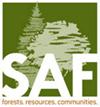支持经济评价程序选择的决策树方法——以防护林为例
IF 1.5
4区 农林科学
Q2 FORESTRY
引用次数: 1
摘要
采用基于自然的解决办法,例如森林,在风险分析和相关决策中发挥着越来越重要的作用。然而,由于没有参考市场,决策者很难对这些解决方案提供的服务进行价值评估,因此面临着一些挑战,这些挑战涉及选择最佳森林管理方案或采取必要的干预措施,使森林能够抵抗和抵御持续气候变化的预期负面影响。在本文中,我们首先进行了探索性分析,以确定选择经济方法构建预测模型的关键因素,以支持对自然灾害的森林保护服务进行评估的选择。探索性分析表明,非需求基础方法具有良好的可复制性和可靠性,成本更低,而陈述偏好方法可以估计无形成分。关于预测模型,除了避免损害方法(90%),几乎所有方法都显示出高水平的正确分类(95%),更一般地说,没有一种方法对所有操作环境都有效,而是选择的变化取决于利益相关者提出的要求及其在经济、人力和技术方面的可用性。最后,应当记住,所选择的方法框架不应被视为替代人类分析复杂局势的能力,而应被视为对这一进程的一种协助。研究启示:采用决策支持系统、方法框架和指南可以帮助决策者在所需的时间、使用的资源和干预成本方面做出最有效和最高效的选择。该决策支持系统与框架和准则等其他工具相结合,提供了一个灵活的支持系统,旨在改进未来生态系统服务评估和管理以及相关决策的设计和实施。本文章由计算机程序翻译,如有差异,请以英文原文为准。
The Decision Trees Method to Support the Choice of Economic Evaluation Procedure: The Case of Protection Forests
The adoption of nature-based solutions, such as forests, is playing an increasingly important role in risk analysis and related decision-making. However, decision-makers struggle to put a value on the services provided by these solutions, as there is no reference market, and are thus faced with several challenges, which relate to the choice of the best forest management program or the interventions needed to make a forest resistant and resilient to the expected negative impacts of ongoing climate change. In this article, we started with an exploratory analysis to identify the key factors in the choice of an economic method to build predictive models to support the choice in an evaluation of the forest protection service against natural hazards. The exploratory analysis showed that non-demand-based methods have a good degree of replicability and reliability and are cheaper, whereas stated preference methods can estimate the intangible component. Concerning predictive models, almost all methods showed a high level of correct classification (95%), apart from the avoided damages method (90%) and, more generally, there is no method that is valid for all operational contexts but rather the choice changes depend on the demands made by the stakeholders and their availability in economic, human, and technological terms. In conclusion, it should be remembered that the methodological framework chosen should not be seen as a substitute for the human ability to analyze complex situations but rather as an aid to this process.
Study Implications: The adoption of decision support systems and methodological frameworks and guidelines can help decision-makers to make the most effective and efficient choices, in terms of time needed, resources used, and intervention costs. The combination of this decision support system with other tools, such as frameworks and guidelines, provides a flexible support system aimed at improving the design and implementation of future ecosystem service assessments and management as well as related decision-making.
求助全文
通过发布文献求助,成功后即可免费获取论文全文。
去求助
来源期刊

Forest Science
农林科学-林学
CiteScore
2.80
自引率
7.10%
发文量
45
审稿时长
3 months
期刊介绍:
Forest Science is a peer-reviewed journal publishing fundamental and applied research that explores all aspects of natural and social sciences as they apply to the function and management of the forested ecosystems of the world. Topics include silviculture, forest management, biometrics, economics, entomology & pathology, fire & fuels management, forest ecology, genetics & tree improvement, geospatial technologies, harvesting & utilization, landscape ecology, operations research, forest policy, physiology, recreation, social sciences, soils & hydrology, and wildlife management.
Forest Science is published bimonthly in February, April, June, August, October, and December.
 求助内容:
求助内容: 应助结果提醒方式:
应助结果提醒方式:


